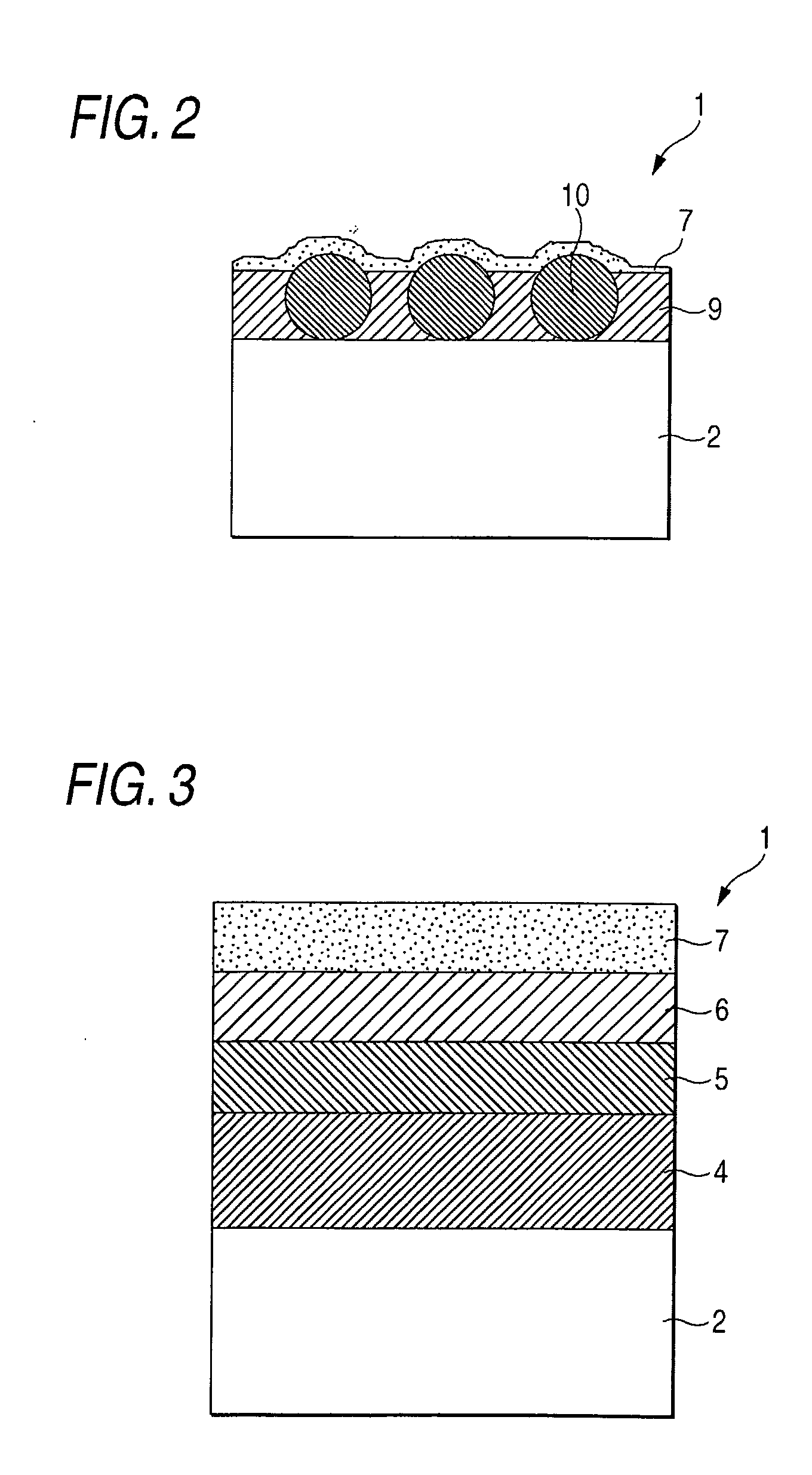Antireflection film, polarizing plate, method for producing them, liquid cryatal display element, liquid crystal display device, and image display device
a technology of antireflection film and polarizing plate, which is applied in the direction of polarising elements, instruments, synthetic resin layered products, etc., can solve the problems of long heating time, difficult to obtain, and low-refractive index materials, so as to reduce weight and cost, the effect of reducing weigh
- Summary
- Abstract
- Description
- Claims
- Application Information
AI Technical Summary
Benefits of technology
Problems solved by technology
Method used
Image
Examples
first aspect and second embodiment
of the Invention
(High (Middle)-Refractive Index Layer)
[0409] When a high-refractive index layer is in the antireflection film of the invention, then its refractive index is preferably from 1.65 to 2.40, more preferably from 1.70 to 2.20. When a middle-refractive index layer is in the film, then its refractive index is so controlled that it could be between the refractive index of the low-refractive index layer and that of the high-refractive index layer. Preferably, the refractive index of the middle-refractive index layer is from 1.55 to 1.80. Also preferably, the haze of the high-refractive index layer and the middle-refractive index layer is at most 3%.
[0410] For the high-refractive index layer and the middle-refractive index layer in the invention, preferably used is a cured product of a composition that is prepared by dispersing inorganic fine particles having a high refractive index in a monomer, an initiator and an organic substituted silicon compound such as those describ...
third embodiment
of the Invention
[0454] (Light-Scattering Layer) The light-scattering layer is formed for the purpose of imparting a light diffusion property owing to at least any of surface light scattering or internal light scattering, to the film, and for the purpose of imparting thereto a hard coat property of improving the scratch resistance of the film. Accordingly, it is desirable that the light-scattering layer contains a translucent resin for imparting the hard coat property to the film and translucent particles for imparting the light-scattering property thereto, and may optionally contain an inorganic filler which is for making the layer have a high refractive index, for preventing the layer from being shrunk after crosslinking, and for increasing the mechanical strength of the layer.
[0455] For imparting the hard coat property to the film, the thickness of the light-scattering layer is preferably from 1 to 10 μμ, more preferably from 2 to 6 μm. When its thickness falls within the range a...
fourth embodiment
[0537] The antireflective film in the invention comprises the cellulose acylate film support having provided thereon by coating a light-diffusing layer or a high-refractive index layer, and a antireflective layer comprising a low-refractive index layer having a refractive index lower than that of the support.
[0538] Further, it is preferred for the antireflective film in the invention to have an average reflectivity (mirror reflectivity) in wavelengths of from 380 to 680 nm of 3% or less, and a haze value of from 0.1 to 60% (when the antireflective film takes the constitution of a light-diffusing layer and a low-refractive index layer, the haze value is from 10 to 60%, and when the constitution comprises a high-refractive index layer and a low-refractive index layer, from 0.1 to 5%), more preferably the average reflectivity is 2% or less and the haze value is from 0.2 to 55% (in the case of the constitution of a light-diffusing layer and a low-refractive index layer, the haze value ...
PUM
| Property | Measurement | Unit |
|---|---|---|
| refractive index | aaaaa | aaaaa |
| surface free energy | aaaaa | aaaaa |
| scratch resistance | aaaaa | aaaaa |
Abstract
Description
Claims
Application Information
 Login to View More
Login to View More - R&D
- Intellectual Property
- Life Sciences
- Materials
- Tech Scout
- Unparalleled Data Quality
- Higher Quality Content
- 60% Fewer Hallucinations
Browse by: Latest US Patents, China's latest patents, Technical Efficacy Thesaurus, Application Domain, Technology Topic, Popular Technical Reports.
© 2025 PatSnap. All rights reserved.Legal|Privacy policy|Modern Slavery Act Transparency Statement|Sitemap|About US| Contact US: help@patsnap.com



